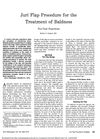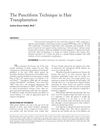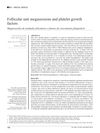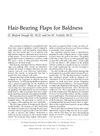Experiences with Parieto-Occipital Flaps in Hair Transplantation
January 1978
in “
The Laryngoscope
”
parieto-occipital flap hair transplantation hereditary baldness traumatic baldness scalp flap superficial temporal artery punch grafting donor site closure flap angulation necrosis temporary hair loss dense hairlines Doppler flowmeter hair transplant baldness hair loss hairpiece artery location device
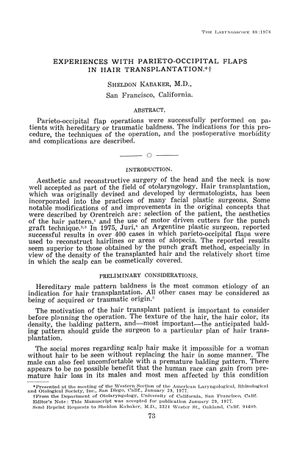
TLDR Using a scalp flap for hair transplantation gives denser, faster results than older methods, but it's complex and needs careful planning.
The document from 1978 details Sheldon Kabaker's experiences with parieto-occipital flap operations for hair transplantation on nine patients, some of whom received two flaps, to treat hereditary or traumatic baldness. The technique, based on Juri's method, uses a scalp flap from the posterior branch of the superficial temporal artery and is reported to provide superior results in hair density and speed of coverage compared to punch grafting. Kabaker discusses the surgical planning, technique, and patient considerations, noting challenges such as donor site closure, flap angulation, bleeding, necrosis, and temporary hair loss. Despite these issues, patients achieved dense hairlines and were satisfied. The procedure requires meticulous planning, patient awareness of risks, and is recommended for those with traumatic hair loss, dissatisfaction with punch grafting, or current hairpiece users. A Doppler flowmeter is essential for locating the artery during surgery. The document emphasizes the importance of careful patient selection and informed consent for this rewarding but complex operation.
